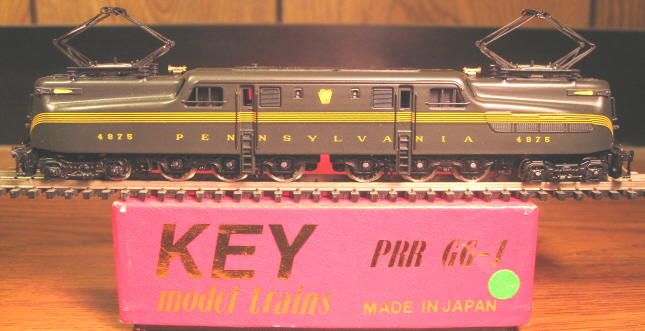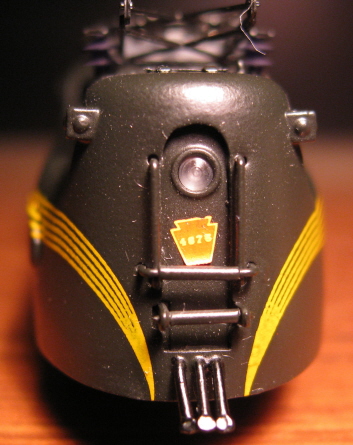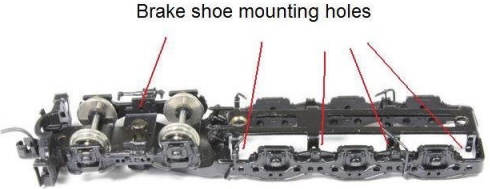

Introduced: 1987
Key's GG-1 is a very nice looking model that runs very well. However, I think it's fair to say that at this point it has been eclipsed by Kato's mostly superior 2008 version.

The chassis is all metal and quite hefty. The motor is an open-sided 5-poler. There are no flywheels. Each truck assembly provides pickup (with the five left-side wheels on the forward truck picking up left-rail current, and the five right-side wheels on the rear truck picking up right-rail current). No traction tires. Current is transferred into the chassis by way of sprung metal contacts screwed to the bottom of the chassis. Current flows directly into the motor from the chassis itself (no wires). The dual driveshafts turn large brass worms that are housed inside of metal weights (said weights providing most of the model's heft). The worms turn idler gears inside of the metal truck towers. All six of the central axles are geared, and all gearing is metal. Micro-Trains couplers come mounted to the trucks. There is no window glass or lighting. Wheels are low-profile, so no problems on Code-55 rails. The panatagraphs are non-operational (insofar as they don't conduct current). However, they are sprung and do move up and down.
Performance is quite impressive. Throttle response is smooth at all levels. Pickup is excellent - no stalling. Slow-speed creep is decent (although given the somewhat primitive motor, not nearly as creepy as more modern models). The top-end speed is excessive (again, probably due to the low-tech motor). I was surprised by how quietly this model runs (especially given the all-metal gearing scheme). No, nowhere near as quiet as Kato's GG-1. But quite impressive for old brass. I didn't have any problems keeping the wheels on the rails (even on very narrow radius curves). Pulling power is strong. Due to the lack of flywheels, it does tend to start and stop rather abruptly.
The looks are impressive as well, although I have to say that I think Kato's model has finer paint and detailing. Yes, Key's GG-1 does have the extra odd detail here and there that Kato doesn't (handgrabs, MU hoses, etc). But overall, I think Kato wins this contest as well.

One very noticeable gaffe on this model are the road number graphics on either end. Rather than being painted on, they appear to be stickers. And as pictured above, rather ineptly applied stickers at that.
So, not a bad locomotive at all (for its day) - good looks (for the most part) and solid performance. However, I think the Kato version scores higher in pretty much every category.
This model is delivered with a bunch of do-it-yourself details - four metal handgrabs, and a bunch of plastic brakeshoes. The brakeshoes are to be installed thusly -


To remove the shell, simply unscrew the four small screws on the bottom of the chassis (two on each end). The shell will lift right off at that point.
Grade: A